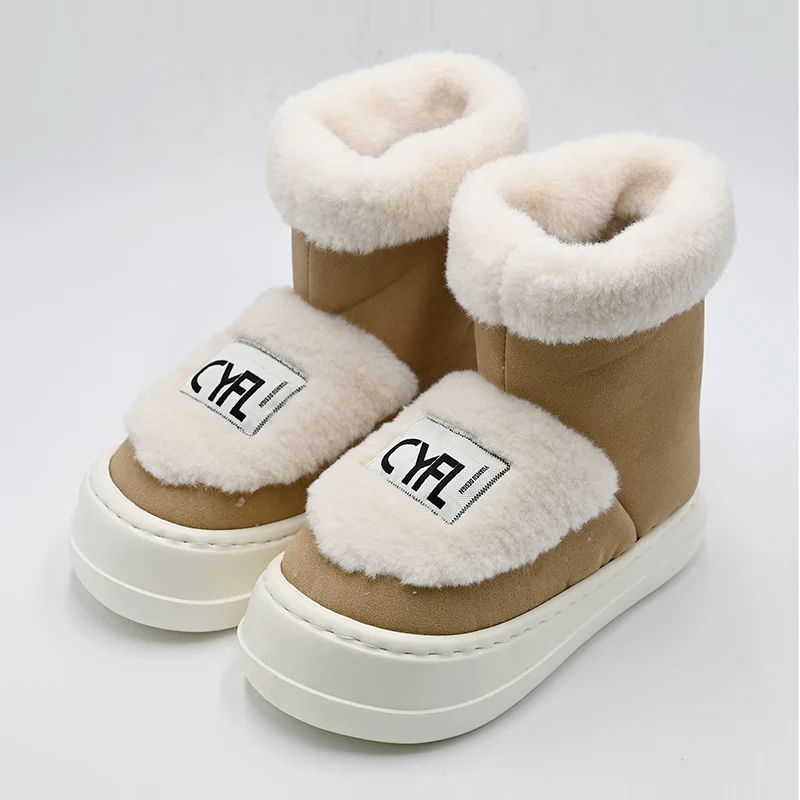- English
- Español
- Português
- русский
- Français
- 日本語
- Deutsch
- tiếng Việt
- Italiano
- Nederlands
- ภาษาไทย
- Polski
- 한국어
- Svenska
- magyar
- Malay
- বাংলা ভাষার
- Dansk
- Suomi
- हिन्दी
- Pilipino
- Türkçe
- Gaeilge
- العربية
- Indonesia
- Norsk
- تمل
- český
- ελληνικά
- український
- Javanese
- فارسی
- தமிழ்
- తెలుగు
- नेपाली
- Burmese
- български
- ລາວ
- Latine
- Қазақша
- Euskal
- Azərbaycan
- Slovenský jazyk
- Македонски
- Lietuvos
- Eesti Keel
- Română
- Slovenski
- मराठी
- Srpski језик
What type of boots are best for snow?
2025-07-08
In winter snowy environments, a pair of suitable snow boots is not only related to comfort, but also directly affects walking safety. For many people, how to choose a pair of boots that are really suitable for snow is a headache. Faced with a variety of materials, functions, and styles of snow boots on the market, which type is the most suitable for snow? This article will analyze what kind of boots are really good boots for snow from the perspectives of anti-slip, warmth, waterproofness, comfort, and practicality.
First of all, anti-slip performance is the most critical indicator of snow boots. The ice and snow ground is slippery. If the sole has poor grip, it is easy to cause falls or slips. High-quality snow boots usually use cold-resistant rubber outsoles and are equipped with deep-grain anti-slip designs. Some also have special anti-slip particles or technical coatings to ensure stable support on ice-covered roads. Therefore, when choosing snow boots, you may wish to check the sole structure to confirm whether it has excellent anti-slip performance.

The second is warmth. The temperature in the snowy environment is low, especially in the north or mountainous areas, where the temperature can reach minus ten degrees or even lower. A good pair of snow boots should have a good thermal insulation structure. It is usually recommended to choose boots with a fleece lining or thermal insulation technology materials, such as wool, down filling or hollow thermal insulation fiber, which can effectively lock the heat of the feet and avoid frostbite and coldness. For extremely cold environments, you should also pay attention to whether the boots have cold resistance test certification.
Next is waterproof performance. Snow will turn into water stains after melting under your feet. If the boot material is not waterproof, it is easy to penetrate into the shoes, causing the socks to be wet and cold, which is not only uncomfortable, but also easy to cause frostbite on the feet. Therefore, boots that are truly suitable for wearing in the snow should have excellent waterproof materials and sealing technology. Common waterproof materials include coated nylon, synthetic leather or Gore-Tex waterproof membrane. It is recommended to choose products marked with waterproof function and try to avoid traditional fabrics or non-waterproof leather.
In addition to anti-slip, warmth and waterproofness, comfort should not be ignored. When walking or doing outdoor activities for a long time, if the shoes are not suitable for the foot shape or are too heavy or too hard, it will cause fatigue or even blisters. A good pair of snow boots should be designed to focus on foot support, space inside the shoe, weight control, and ease of wearing and taking off. Some brands also add shock-absorbing pads, adjustable shoelaces or zipper structures to enhance the wearing experience.
Finally, practicality should be considered. If you only commute in the city or go out for a short distance occasionally, a pair of lightweight snow boots can meet daily needs. But if you are working or traveling in forests, mountains, or polar environments, then a pair of professional outdoor snow boots is more suitable. Such boots are usually more comprehensive, more wear-resistant, and more adaptable.
In general, boots suitable for snow must have core elements such as anti-slip, waterproof, warm and comfortable. When choosing, you should not only pay attention to the brand and appearance, but also start from the actual use environment and choose shoes that can really provide you with protection and convenience in the snow. If you are preparing for winter, you might as well spend more time comparing different types of snow boots. I believe you will be able to find the pair that suits you best.



